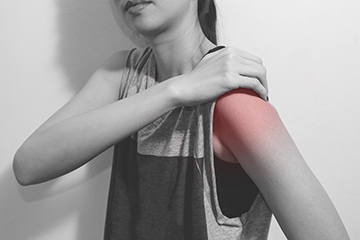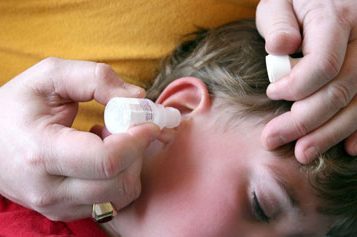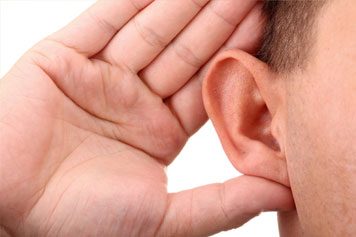
All posts by admin
Teleconsultation Available For Covid-19 Patients

Shoulder Pain In Middle Aged Adults

Always rule out Infective, Malignancy and Inflammatory causes. The problems described here are due to mechanical or degenerative causes.
Shoulder joint pain may be due to
- Overuse /Disuse
- Aging
- Accidents
To an extent these may be prevented by knowing the mechanisms by where they occur.
The pain may be:
- Articular
- Inside the Joint
- Periarticular
- Surrounding the Joint
Location of the pain

- Rotator Cuff / Capsule Problems
- Acromioclavicular Joint arthritis
- Sternoclavicular Joint
- Referred pain from neck
A. Rotator Cuff Tendinitis & Tear
- Rotator cuff is a protective cuff of muscles around the shoulder. A damage to rotaqtor cuff is the most common shoulder problem in middle aged adults.
- It is almost always due to due to excess or chronic strain secondary to persistent misuse of the cuff.

Rotator Cuff Injuries may be
- Tendinitis
- Tendon Tear
B.Subacromial Bursitis
Subacromial bursa is a small sac below the acromioclavicular joint. Its inflammation is called subacromial bursitis. It leads to pain on abducting the shoulder.

C. Frozen Shoulder
- Due to chronic inflammation, shoulder joint capsule shrinks in size and tears with movement with further shrinkage as it heals. Initially there is severe boring pain later leading to gradual reduction in shoulder joint abduction.
D. Acromioclavicular Joint Osteoarthritis

Due to degeneration of the Acromioclavicular joint. There will be pain at the point of shoulder.
Shoulder Problems – When to Worry
- When there is continuous pain at a single site
- When there is a recurring pain during specific movements.
- When pain is associated with weakness of muscles/decreasing ROM.
- When there is a persistent boring pain .
- When there is more severe pain at night/ sleep disturbances due to pain.
- When pain is associated wwith visible swelling / redness.
**All the figures has been taken from internet.
First Aid In Case Of An Insect Goes Inside Your Child’s Ear
Let your child know you can help. Calm your child
Do not poke the insect with a cotton swab/ hair pin other probe. This may push the insect further into the ear & damage the eardrum.
Use gravity to try and dislodge the insect in the ear. Tilt your child’s head to the side & gently shake it. Don’t hit your child’s head.
If your child has tubes in his/ her ears or has a history of ear problems, call your child’s ENT doctor right away. The doctor can tell you what to do.
If your child does not have tubes or ear problems, follow the below mentioned steps
If the insect is alive and is not coming out with gentle head shaking, pour a small amount of vegetable/ mineral oil or baby oil into the ear canal. The oil needs to be warm, but not hot.
Try to float the insect or drown it. As you pour the oil, assist the entry of the oil by straightening of the ear canal. This will usually kill the insect.
If you think the insect is dead and is not come out with gentle head shaking, pour a small amount of warm water into the ear canal to flush it out.
If you aren’t sure the object is an insect, don’t put water in the ear canal. If the object is a tightly wedged seed or bean, water may cause the object to swell.
How to prevent hair loss?
Do’s and Dont’s for long Lustrous Hair
Do’s
- Regular Hair washing-to keeps the hair & scalp clean-at least 3 times a week with mild shampoo & conditioner.
- Apply oil to the hair once a week, preferably coconut oil
- Eat healthy food-That includes essential fatty acid-Vitamins & Protein
- Brush your hair effectively-twice daily after drying the hair
- Use hair colour with caution.
Dont’s
- Don’t brush wet hair
- Avoid hot shower and shampooing your scalp
- Avoid blow drying hair too often
- Avoid daily styling of hair
- Avoid frequent brushing of hair
How To Care Your Ear
Using ear buds to clean ear is dangerous. If you have an ear blocked by ear wax, attempting to clean it with pin or ear buds can worsen the situation.
Ear canal is a curved tube closed at one end by a thin paper like membrane (ear drum). The tube tends to narrow down in the middle. A thorough and complete cleaning of the ear with ear bud is not at all possible. When you try and clean with ear bud, it will lead to partial removal of the wax partially .The rest of the wax is pushed onto the ear drum which can lead to ear infections and can lead to accidental damage to ear drum. If this build-up of earwax presses up against the eardrum, it can mean it doesn’t vibrate as well and therefore cause hearing problems. The eardrum is easily reached with a swab.
Usually there is no need to clean your ears. The skin inside the ear acts as a conveyor belt. It travels along your ear canal from your ear drum bringing any debris and ear wax with it. The ear canal has specialized cells that produce cerumen (ear wax). For some people, ear wax accumulates much faster than others. This can lead to wax build-up that causes decreased ability to hear at times pain.
Always get the ear wax cleaned by an ENT.






